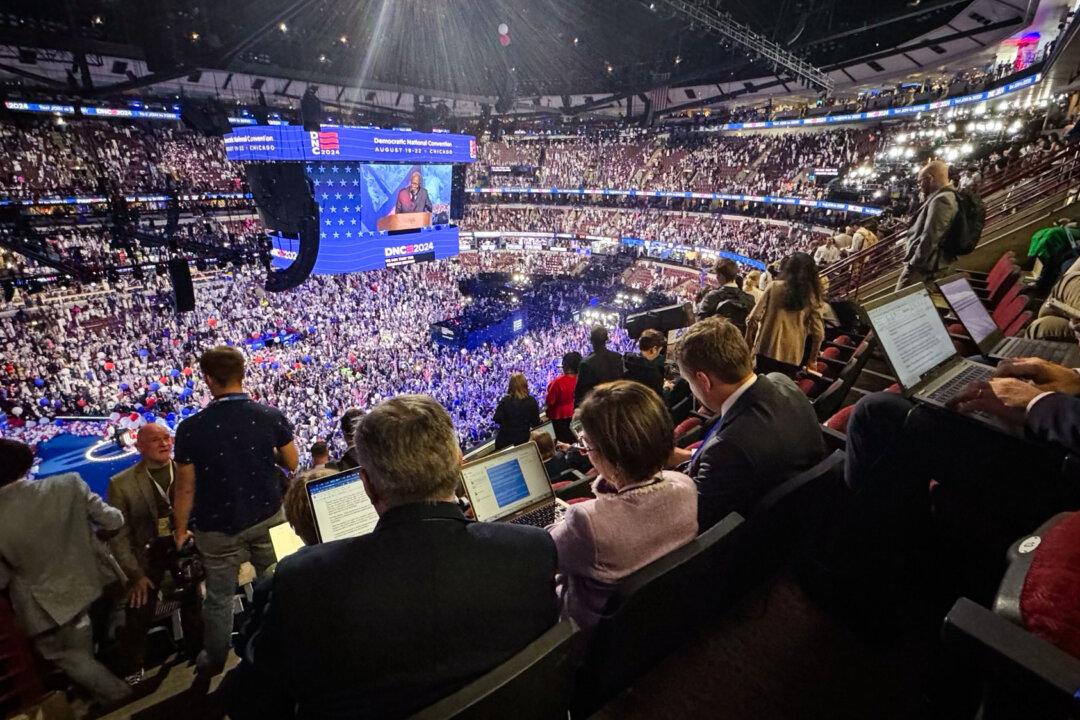House Speaker Kevin McCarthy (R-Calif.) will bring a continuing funding resolution to the House floor this week that will allow Congress additional time to complete the appropriations process and avoid a government shutdown on Oct. 1.
The move seems in part to be a calculated effort by the embattled speaker to get the House’s version of a continuing resolution (CR) passed and avoid being forced to accept spending terms proposed by the Democrat-controlled Senate.
Second Chance CR
The bill most likely to be presented is H.R. 5525, Continuing Appropriations and Border Security Enhancement Act, 2024.That CR was first introduced on Sept. 17 by a coalition of Republican members from the House Freedom and Main Street Caucuses. The measure would fund the government through Oct. 31 but impose an overall 8 percent cut in non-defense discretionary spending.
The bill also incorporates nearly all of H.R. 2, the Secure the Border Act of 2023, which was passed by the House but not considered by the Senate.
Mr. McCarthy canceled a procedural vote on the CR on Sept. 19 amid opposition from fiscal hawks within his party.
Since then, the Senate has been working on a so-called clean CR, which would fund the government for an additional 45 days with no spending cuts.
The speaker lightly dismissed the idea that the Senate might complete work on their CR ahead of the House, thus seizing the upper hand in defining the terms of a spending extension.
Challenge on the Left
Last week Mr. McCarthy was beset by holdouts on the GOP’s right flank, who blocked a series of funding votes with demands over spending levels and House procedure. Now he faces a possible challenge from moderate House Republicans, who have their own plan for avoiding a shutdown.Four members of the Problem Solvers Caucus, a group that includes moderates from both parties, introduced a temporary funding bill on Sept. 22.

“We’re going to do whatever it takes to get that bill on the floor,” Brian Fitzpatrick (R-Pa.) said on “State of the Union” on Sept. 24. “And we have multiple options. A discharge petition is one of several options.”
A discharge petition brings a bill to the House floor without the speaker’s consent. Accomplishing that would require five Republicans to join Democrats in the effort, essentially defying their own leader’s wishes.
Asked about that possibility, Mr. McCarthy seemed unconcerned.
Border Security as Leverage
Mr. McCarthy now seems optimistic that his members—and perhaps some moderate Democrats—will support the CR to avoid a shutdown.For added leverage, Mr. McCarthy’s message of the day has been that President Joe Biden should support the CR because of its border security provisions. After detailing the crisis on the country’s southern border and repeating the calls for action voiced by some Democratic state and local politicians, Mr. McCarthy pictured the CR as an opportunity to solve the problem.
“If the president was willing to change part of his plan along this border, we can fund this government going forward. We will have a continuing resolution vote in this House on the rule to bring it up,” Mr. McCarthy said.
Appropriations Bills, Then CR
The House is scheduled to consider a slate of appropriations bills on Sept. 26, which Mr. McCarthy said would precede any consideration of a CR.“We will move tonight on a rule that brings up four more appropriation bills. We are the only body in the House to pass a bill. And if we pass those next four, that would be 72 percent of all the discretionary spending,” he said.
The bills up for consideration are the $91.5 billion for the Homeland Security budget, a $52.5 billion State Department spending plan, and the $886.3 billion National Defense Authorization Act (NDAA), as well as the $1.5 trillion Farm Bill, which comes up every five years.
Consideration of the NDAA has been defeated by hardline Republicans twice in the previous seven days.
Passing all four of the bills could significantly increase Mr. McCarthy’s leverage both in passing a CR and asking the Senate to accept its terms.







